Biology 2nd Edition Openstax Test Bank provides an open-access, comprehensive resource covering foundational concepts in biology. The test bank accompanying this textbook typically includes a variety of questions that assess students’ understanding of the material presented in each chapter.
Test Bank Description:
- Core Biological Concepts:
- Questions covering essential topics such as cell structure and function, genetics, evolution, biodiversity, and ecosystems.
- The test bank aligns with the chapters in the textbook, covering topics such as metabolism, photosynthesis, cellular respiration, molecular biology, and more.
- Multiple-Choice and True/False Questions:
- A wide variety of question types, including multiple-choice, true/false, and matching, designed to test a student’s recall, comprehension, and application of key concepts.
- Critical Thinking and Application-Based Questions:
- Includes higher-order thinking questions that require students to apply their knowledge to scenarios, real-world examples, and problem-solving situations.
- Scientific Inquiry and Data Analysis:
- Questions related to interpreting data, graphs, and scientific experiments, promoting scientific inquiry and understanding of the scientific method.
- Integrative Topics:
- Questions that integrate concepts from various biological disciplines, such as ecology, evolution, and molecular biology, to assess students’ ability to connect ideas across different areas.
- Self-Assessment and Exam Preparation:
- The test bank provides an excellent resource for self-assessment, allowing students to gauge their understanding and readiness for exams, whether midterms or finals.
Unit 1 The Chemistry of Life
Chapter 1 The Study of Life
Introduction
1.1 The Science of Biology
1.2 Themes and Concepts of Biology
Key Terms
Chapter Summary
Visual Connection Questions
Review Questions
Critical Thinking Questions
Chapter 2 The Chemical Foundation of Life
Introduction
2.1 Atoms, Isotopes, Ions, and Molecules: The Building Blocks
2.2 Water
2.3 Carbon
Key Terms
Chapter Summary
Visual Connection Questions
Review Questions
Critical Thinking Questions
Chapter 3 Biological Macromolecules
Introduction
3.1 Synthesis of Biological Macromolecules
3.2 Carbohydrates
3.3 Lipids
3.4 Proteins
3.5 Nucleic Acids
Key Terms
Chapter Summary
Visual Connection Questions
Review Questions
Critical Thinking Questions
Unit 2 The Cell
Chapter 4 Cell Structure
Introduction
4.1 Studying Cells
4.2 Prokaryotic Cells
4.3 Eukaryotic Cells
4.4 The Endomembrane System and Proteins
4.5 The Cytoskeleton
4.6 Connections between Cells and Cellular Activities
Key Terms
Chapter Summary
Visual Connection Questions
Review Questions
Critical Thinking Questions
Chapter 5 Structure and Function of Plasma Membranes
Introduction
5.1 Components and Structure
5.2 Passive Transport
5.3 Active Transport
5.4 Bulk Transport
Key Terms
Chapter Summary
Visual Connection Questions
Review Questions
Critical Thinking Questions
Chapter 6 Metabolism
Introduction
6.1 Energy and Metabolism
6.2 Potential, Kinetic, Free, and Activation Energy
6.3 The Laws of Thermodynamics
6.4 ATP: Adenosine Triphosphate
6.5 Enzymes
Key Terms
Chapter Summary
Visual Connection Questions
Review Questions
Critical Thinking Questions
Chapter 7 Cellular Respiration
Introduction
7.1 Energy in Living Systems
7.2 Glycolysis
7.3 Oxidation of Pyruvate and the Citric Acid Cycle
7.4 Oxidative Phosphorylation
7.5 Metabolism without Oxygen
7.6 Connections of Carbohydrate, Protein, and Lipid Metabolic Pathways
7.7 Regulation of Cellular Respiration
Key Terms
Chapter Summary
Visual Connection Questions
Review Questions
Critical Thinking Questions
Chapter 8 Photosynthesis
Introduction
8.1 Overview of Photosynthesis
8.2 The Light-Dependent Reactions of Photosynthesis
8.3 Using Light Energy to Make Organic Molecules
Key Terms
Chapter Summary
Visual Connection Questions
Review Questions
Critical Thinking Questions
Chapter 9 Cell Communication
Introduction
9.1 Signaling Molecules and Cellular Receptors
9.2 Propagation of the Signal
9.3 Response to the Signal
9.4 Signaling in Single-Celled Organisms
Key Terms
Chapter Summary
Visual Connection Questions
Review Questions
Critical Thinking Questions
Chapter 10 Cell Reproduction
Introduction
10.1 Cell Division
10.2 The Cell Cycle
10.3 Control of the Cell Cycle
10.4 Cancer and the Cell Cycle
10.5 Prokaryotic Cell Division
Key Terms
Chapter Summary
Visual Connection Questions
Review Questions
Critical Thinking Questions
Unit 3 Genetics
Chapter 11 Meiosis and Sexual Reproduction
Introduction
11.1 The Process of Meiosis
11.2 Sexual Reproduction
Key Terms
Chapter Summary
Visual Connection Questions
Review Questions
Critical Thinking Questions
Chapter 12 Mendel’s Experiments and Heredity
Introduction
12.1 Mendel’s Experiments and the Laws of Probability
12.2 Characteristics and Traits
12.3 Laws of Inheritance
Key Terms
Chapter Summary
Visual Connection Questions
Review Questions
Critical Thinking Questions
Chapter 13 Modern Understandings of Inheritance
Introduction
13.1 Chromosomal Theory and Genetic Linkage
13.2 Chromosomal Basis of Inherited Disorders
Key Terms
Chapter Summary
Visual Connection Questions
Review Questions
Critical Thinking Questions
Chapter 14 DNA Structure and Function
Introduction
14.1 Historical Basis of Modern Understanding
14.2 DNA Structure and Sequencing
14.3 Basics of DNA Replication
14.4 DNA Replication in Prokaryotes
14.5 DNA Replication in Eukaryotes
14.6 DNA Repair
Key Terms
Chapter Summary
Visual Connection Questions
Review Questions
Critical Thinking Questions
Chapter 15 Genes and Proteins
Introduction
15.1 The Genetic Code
15.2 Prokaryotic Transcription
15.3 Eukaryotic Transcription
15.4 RNA Processing in Eukaryotes
15.5 Ribosomes and Protein Synthesis
Key Terms
Chapter Summary
Visual Connection Questions
Review Questions
Critical Thinking Questions
Chapter 16 Gene Expression
Introduction
16.1 Regulation of Gene Expression
16.2 Prokaryotic Gene Regulation
16.3 Eukaryotic Epigenetic Gene Regulation
16.4 Eukaryotic Transcription Gene Regulation
16.5 Eukaryotic Post-transcriptional Gene Regulation
16.6 Eukaryotic Translational and Post-translational Gene Regulation
16.7 Cancer and Gene Regulation
Key Terms
Chapter Summary
Visual Connection Questions
Review Questions
Critical Thinking Questions
Chapter 17 Biotechnology and Genomics
Introduction
17.1 Biotechnology
17.2 Mapping Genomes
17.3 Whole-Genome Sequencing
17.4 Applying Genomics
17.5 Genomics and Proteomics
Key Terms
Chapter Summary
Visual Connection Questions
Review Questions
Critical Thinking Questions
Unit 4 Evolutionary Processes
Chapter 18 Evolution and the Origin of Species
Introduction
18.1 Understanding Evolution
18.2 Formation of New Species
18.3 Reconnection and Speciation Rates
Key Terms
Chapter Summary
Visual Connection Questions
Review Questions
Critical Thinking Questions
Chapter 19 The Evolution of Populations
Introduction
19.1 Population Evolution
19.2 Population Genetics
19.3 Adaptive Evolution
Key Terms
Chapter Summary
Visual Connection Questions
Review Questions
Critical Thinking Questions
Chapter 20 Phylogenies and the History of Life
Introduction
20.1 Organizing Life on Earth
20.2 Determining Evolutionary Relationships
20.3 Perspectives on the Phylogenetic Tree
Key Terms
Chapter Summary
Visual Connection Questions
Review Questions
Critical Thinking Questions
Unit 5 Biological Diversity
Chapter 21 Viruses
Introduction
21.1 Viral Evolution, Morphology, and Classification
21.2 Virus Infections and Hosts
21.3 Prevention and Treatment of Viral Infections
21.4 Other Acellular Entities: Prions and Viroids
Key Terms
Chapter Summary
Visual Connection Questions
Review Questions
Critical Thinking Questions
Chapter 22 Prokaryotes: Bacteria and Archaea
Introduction
22.1 Prokaryotic Diversity
22.2 Structure of Prokaryotes: Bacteria and Archaea
22.3 Prokaryotic Metabolism
22.4 Bacterial Diseases in Humans
22.5 Beneficial Prokaryotes
Key Terms
Chapter Summary
Visual Connection Questions
Review Questions
Critical Thinking Questions
Chapter 23 Protists
Introduction
23.1 Eukaryotic Origins
23.2 Characteristics of Protists
23.3 Groups of Protists
23.4 Ecology of Protists
Key Terms
Chapter Summary
Visual Connection Questions
Review Questions
Critical Thinking Questions
Chapter 24 Fungi
Introduction
24.1 Characteristics of Fungi
24.2 Classifications of Fungi
24.3 Ecology of Fungi
24.4 Fungal Parasites and Pathogens
24.5 Importance of Fungi in Human Life
Key Terms
Chapter Summary
Visual Connection Questions
Review Questions
Critical Thinking Questions
Chapter 25 Seedless Plants
Introduction
25.1 Early Plant Life
25.2 Green Algae: Precursors of Land Plants
25.3 Bryophytes
25.4 Seedless Vascular Plants
Key Terms
Chapter Summary
Visual Connection Questions
Review Questions
Critical Thinking Questions
Chapter 26 Seed Plants
Introduction
26.1 Evolution of Seed Plants
26.2 Gymnosperms
26.3 Angiosperms
26.4 The Role of Seed Plants
Key Terms
Chapter Summary
Visual Connection Questions
Review Questions
Critical Thinking Questions
Chapter 27 Introduction to Animal Diversity
Introduction
27.1 Features of the Animal Kingdom
27.2 Features Used to Classify Animals
27.3 Animal Phylogeny
27.4 The Evolutionary History of the Animal Kingdom
Key Terms
Chapter Summary
Visual Connection Questions
Review Questions
Critical Thinking Questions
Chapter 28 Invertebrates
Introduction
28.1 Phylum Porifera
28.2 Phylum Cnidaria
28.3 Superphylum Lophotrochozoa: Flatworms, Rotifers, and Nemerteans
28.4 Superphylum Lophotrochozoa: Molluscs and Annelids
28.5 Superphylum Ecdysozoa: Nematodes and Tardigrades
28.6 Superphylum Ecdysozoa: Arthropods
28.7 Superphylum Deuterostomia
Key Terms
Chapter Summary
Visual Connection Questions
Review Questions
Critical Thinking Questions
Chapter 29 Vertebrates
Introduction
29.1 Chordates
29.2 Fishes
29.3 Amphibians
29.4 Reptiles
29.5 Birds
29.6 Mammals
29.7 The Evolution of Primates
Key Terms
Chapter Summary
Visual Connection Questions
Review Questions
Critical Thinking Questions
Unit 6 Plant Structure and Function
Chapter 30 Plant Form and Physiology
Introduction
30.1 The Plant Body
30.2 Stems
30.3 Roots
30.4 Leaves
30.5 Transport of Water and Solutes in Plants
30.6 Plant Sensory Systems and Responses
Key Terms
Chapter Summary
Visual Connection Questions
Review Questions
Critical Thinking Questions
Chapter 31 Soil and Plant Nutrition
Introduction
31.1 Nutritional Requirements of Plants
31.2 The Soil
31.3 Nutritional Adaptations of Plants
Key Terms
Chapter Summary
Visual Connection Questions
Review Questions
Critical Thinking Questions
Chapter 32 Plant Reproduction
Introduction
32.1 Reproductive Development and Structure
32.2 Pollination and Fertilization
32.3 Asexual Reproduction
Key Terms
Chapter Summary
Visual Connection Questions
Review Questions
Critical Thinking Questions
Unit 7 Animal Structure and Function
Chapter 33 The Animal Body: Basic Form and Function
Introduction
33.1 Animal Form and Function
33.2 Animal Primary Tissues
33.3 Homeostasis
Key Terms
Chapter Summary
Visual Connection Questions
Review Questions
Critical Thinking Questions
Chapter 34 Animal Nutrition and the Digestive System
Introduction
34.1 Digestive Systems
34.2 Nutrition and Energy Production
34.3 Digestive System Processes
34.4 Digestive System Regulation
Key Terms
Chapter Summary
Visual Connection Questions
Review Questions
Critical Thinking Questions
Chapter 35 The Nervous System
Introduction
35.1 Neurons and Glial Cells
35.2 How Neurons Communicate
35.3 The Central Nervous System
35.4 The Peripheral Nervous System
35.5 Nervous System Disorders
Key Terms
Chapter Summary
Visual Connection Questions
Review Questions
Critical Thinking Questions
Chapter 36 Sensory Systems
Introduction
36.1 Sensory Processes
36.2 Somatosensation
36.3 Taste and Smell
36.4 Hearing and Vestibular Sensation
36.5 Vision
Key Terms
Chapter Summary
Visual Connection Questions
Review Questions
Critical Thinking Questions
Chapter 37 The Endocrine System
Introduction
37.1 Types of Hormones
37.2 How Hormones Work
37.3 Regulation of Body Processes
37.4 Regulation of Hormone Production
37.5 Endocrine Glands
Key Terms
Chapter Summary
Visual Connection Questions
Review Questions
Critical Thinking Questions
Chapter 38 The Musculoskeletal System
Introduction
38.1 Types of Skeletal Systems
38.2 Bone
38.3 Joints and Skeletal Movement
38.4 Muscle Contraction and Locomotion
Key Terms
Chapter Summary
Visual Connection Questions
Review Questions
Critical Thinking Questions
Chapter 39 The Respiratory System
Introduction
39.1 Systems of Gas Exchange
39.2 Gas Exchange across Respiratory Surfaces
39.3 Breathing
39.4 Transport of Gases in Human Bodily Fluids
Key Terms
Chapter Summary
Visual Connection Questions
Review Questions
Critical Thinking Questions
Chapter 40 The Circulatory System
Introduction
40.1 Overview of the Circulatory System
40.2 Components of the Blood
40.3 Mammalian Heart and Blood Vessels
40.4 Blood Flow and Blood Pressure Regulation
Key Terms
Chapter Summary
Visual Connection Questions
Review Questions
Critical Thinking Questions
Chapter 41 Osmotic Regulation and Excretion
Introduction
41.1 Osmoregulation and Osmotic Balance
41.2 The Kidneys and Osmoregulatory Organs
41.3 Excretion Systems
41.4 Nitrogenous Wastes
41.5 Hormonal Control of Osmoregulatory Functions
Key Terms
Chapter Summary
Visual Connection Questions
Review Questions
Critical Thinking Questions
Chapter 42 The Immune System
Introduction
42.1 Innate Immune Response
42.2 Adaptive Immune Response
42.3 Antibodies
42.4 Disruptions in the Immune System
Key Terms
Chapter Summary
Visual Connection Questions
Review Questions
Critical Thinking Questions
Chapter 43 Animal Reproduction and Development
Introduction
43.1 Reproduction Methods
43.2 Fertilization
43.3 Human Reproductive Anatomy and Gametogenesis
43.4 Hormonal Control of Human Reproduction
43.5 Human Pregnancy and Birth
43.6 Fertilization and Early Embryonic Development
43.7 Organogenesis and Vertebrate Formation
Key Terms
Chapter Summary
Visual Connection Questions
Review Questions
Critical Thinking Questions
Unit 8 Ecology
Chapter 44 Ecology and the Biosphere
Introduction
44.1 The Scope of Ecology
44.2 Biogeography
44.3 Terrestrial Biomes
44.4 Aquatic Biomes
44.5 Climate and the Effects of Global Climate Change
Key Terms
Chapter Summary
Visual Connection Questions
Review Questions
Critical Thinking Questions
Chapter 45 Population and Community Ecology
Introduction
45.1 Population Demography
45.2 Life Histories and Natural Selection
45.3 Environmental Limits to Population Growth
45.4 Population Dynamics and Regulation
45.5 Human Population Growth
45.6 Community Ecology
45.7 Behavioral Biology: Proximate and Ultimate Causes of Behavior
Key Terms
Chapter Summary
Visual Connection Questions
Review Questions
Critical Thinking Questions
Chapter 46 Ecosystems
Introduction
46.1 Ecology of Ecosystems
46.2 Energy Flow through Ecosystems
46.3 Biogeochemical Cycles
Key Terms
Chapter Summary
Visual Connection Questions
Review Questions
Critical Thinking Questions
Chapter 47 Conservation Biology and Biodiversity

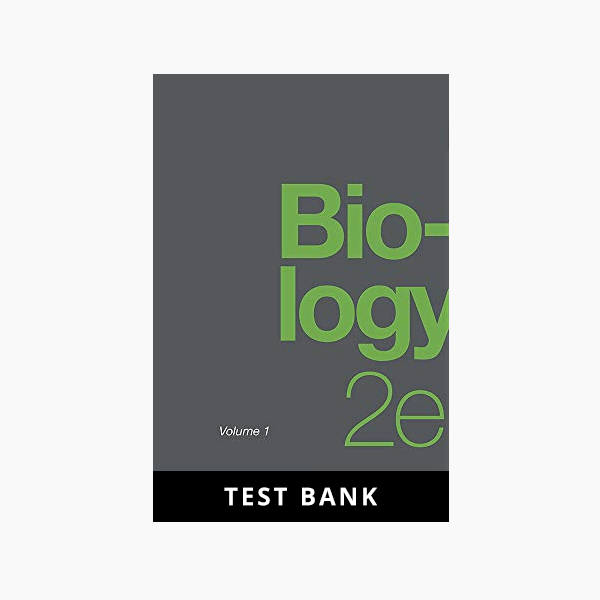




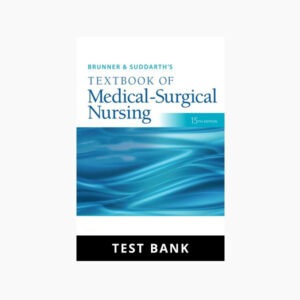
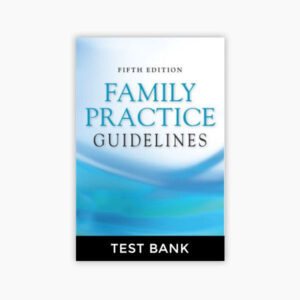

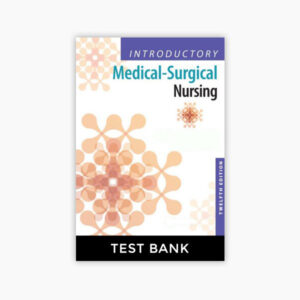
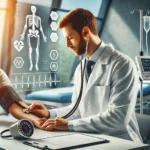
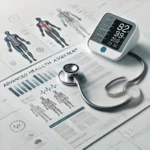
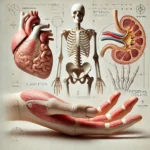

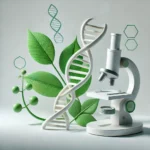

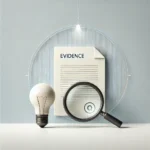
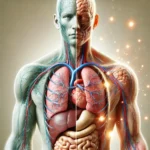


Reviews
There are no reviews yet.